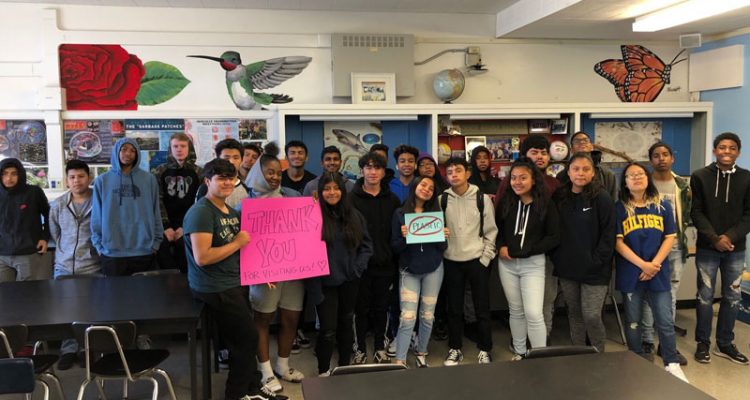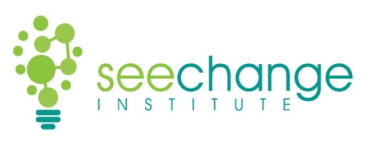The Guardian: Research Study on Engaging Action in Online Journalism
Subtitle here

Background
The Bill and Melinda Gates Foundation funded a project with the Guardian to investigate the role of Action Buttons in influencing readers to take action on homelessness. In partnership with researchers at the USC Norman Lear Center, we investigated whether specific story characteristics and/or messaging strategies influenced readers’ motivations to take action. We developed a comprehensive analysis to understand how to leverage behavioral science insights in the context of nonprofit and advocacy to promote positive societal change.
The Guardian, the well known British daily newspaper, received support from the Bill and Melinda Gates Foundation for a special series of coverage on the issue of homelessness. As part of this funding, the Guardian worked with a start-up called Speakable to create and embed Action Buttons at the bottom of these stories. The goal of these buttons was to give readers opportunities to “take action” on an issue after reading a story about it.
<TAKE ACTION BUTTON NEEDED>
Approach
Our role was as research partner with the USC Norman Lear Center. Our study consisted of the following methods:
- We studied a set of 54 articles created as part of the Guardian’s Outside in America feature series, which ran from February to August 2017, to determine whether changes in presentation influenced reader engagement with Action Buttons — interactive widgets that allow readers to easily donate money or volunteer for causes from within story content. After coding the Action Buttons features, we performed a series of qualitative and quantitative analyses to examine the effects of variations on usage.
The team began by analyzing articles from the Guardian’s “Outside in America” feature series for the story content, including both descriptive assessment and statistical comparison of different content choices. This content analysis was followed by an analysis of how different ‘Action Button variations’ (e.g., placement at middle or bottom of an article of interactive widgets that allow readers to donate money easily or volunteer for causes) influence reader engagement through both on-site performance analysis and A/B testing. After coding the stories on both article and action button features, we performed a series of qualitative and quantitative analyses to examine the effects of different variations on usage.
Findings
Findings from our analysis of the Speakable Action Buttons include the following:
- Buttons placed at the bottom of an article resulted in a higher action initiation rate than buttons placed in the middle of the article.
- Buttons with multiple actions resulted in a higher initiation rate than buttons featuring only one action.
- The presence of a donation scale resulted in a lower initiation rate than when a donation scale was absent.
- Action Buttons featuring city-level organizations had higher initiation rates than others.
- Messages using ‘moral norms’ — what someone ought to do — led to greater audience engagement than those employing ‘social norms’ — what others are currently doing.
- Messages using concrete framing led to greater audience engagement than abstract messages.
Social science represents a potentially powerful, yet underutilized tool that can improve messaging content aiming for social benefit. When such elements are included in campaigns, evaluation should be performed to better understand what does and does not work for a given audience. The work described here was an initial attempt at informing such an approach; we hope future research can build on this work and continue the conversation.
Results provided a complete analysis of the content choices and use of action buttons in the Guardian ‘Outside in America’ article series on homelessness in the United States. This project was able to begin identifying variables, drawn from story elements, persuasive story strategies, and action button features, which could have a positive effect on initiating audience action button engagement.
- Our content analysis identified and analyzed standard features within the Guardian “Outside in America” content regarding 11 variables (i.e., common topics, story timing, solution frames, journalism styles, emotion, and moral foundations). Most notably, we found that the articles lacked suggestions of solutions to the issues presented that individuals could implement.
- Our Action Button analysis identified common variations of the Speakable action buttons to determine if any particular features were associated with greater reader engagement. Our results suggested that variables related to the action button itself, such as placement, number of action options provided, donation scales, and the operation level of crucial organizations, may impact audience response to online news content.
- Our A/B testing identified whether specific message characteristics within the Speakable action buttons could be causally connected to greater audience engagement. Most notably, our Results indicated that messages using ‘moral norms’ — what someone ought to do — and both ‘social and moral norms’ — what others are currently doing and what one ought to do — were related to greater audience engagement.
Opportunities & Future Directions
The findings presented interesting, albeit mixed, evidence regarding the influence of story characteristics and messaging strategies in driving audience engagement with Action Buttons. The insights gained are useful for making sense of determinants of audience engagement as well as informing strategies for more effectively evaluating such content in the future.
Testimonials
Read the full published report, <LINK TO REPORT NEEDED>
Resource Library
Share This Project
Intrigued? Let’s Chat!
